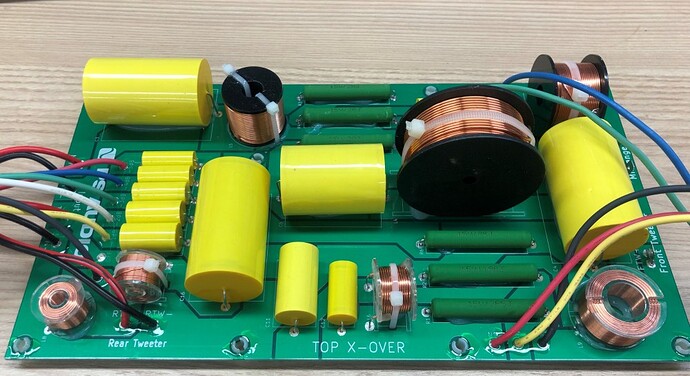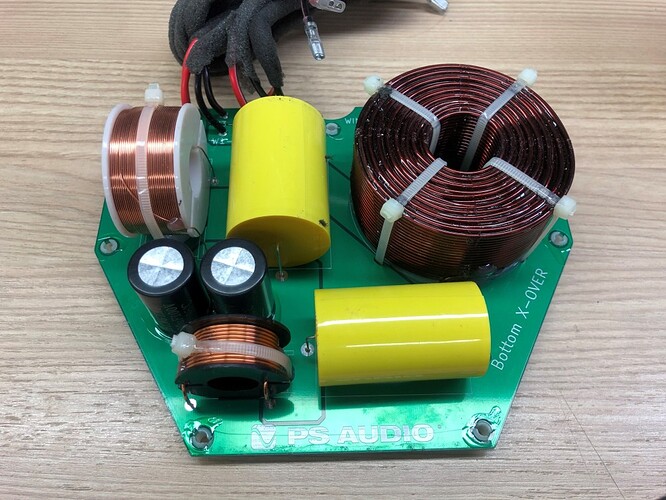Sorry, but the best manufacturing facilities are in China and that is where the plant is. They are one of the best in the world, building brands (mostly UK) that you surely know of.
When you say open baffle, you mean dynamic chassis open baffle speakers, no planars, right?
If so, isn’t the tweeter the only region of an open baffle speaker, which usually isn’t open baffle, but dome/closed design etc.? That’s why I wondered that you especially liked the highs of open baffle designs.
If it’s IAG, then quality production should be a home run. But could be someone else …!
Thanks Chris for the reply.
My current MPL is 3.7m from the Maggie 20.7. Do you have FR30 SPL measurement at MLP between 3.3-4.5M distance.
The other 20.7 character I like is the fast clean bass. in my 11m X 7m X 3.7m size room, at MLP the FR measures fairly flat down to 48hz. Below 48hz, the FR drops off like a cliff.
Do you have FR30 FR measurement in a similar size space at MLP between 3.3-4.5M distance. I am particularly interest to find how what will FR30 FR measurement below 50hz. Can FR30 measure flay down to 30hz?
The 1st time I blew the tweeter ribbon when I was running REW to measure the 20.7 in room response.
The 2nd time, I was playing a live concert track.
In both instance, the original fuse is in place. The fuse did not blew in both cases.
I ask Maggie why the fuse did not blew while the tweeter ribbon broke. I did not get a definite reply
Well, I think that all “thin film” drivers, planars, ESL’s, AMTs all have a little bit of a family sound.
How an FR30 differs from a larger dipole panel speaker is that:
- it is point source in nature, it has a wide and even horizontal coverage (where some panel speakers are a bit of a “head in a vice scenario”).
- it not a dipole - dipoles can have a big, spacious sound but are more placement critical (being away from boundaries) and this can be a bit of an “effect” making drier sounding recordings a bit more diffuse.
- these also have big dynamics and output, which often is something that you have to sacrifice with a lot of panel speakers.
Overall, they are a lot like a traditional box speaker but with the benefits of the planars in the the mids and highs (great detail but without harshness).
The measurement of any speaker below 100 Hz includes a large contribution from the room and we typically see them flat to 20-25 Hz in-room
I would not recommend measuring that loud with REW. Typically, 75-85 dB is plenty to get decent SNR.
I have enjoyed watching the evolution of the FR-30’s, or perhaps “iterative design” is a better term, and really enjoy your delivery and installation videos!
Forgive my boldness, but I would like to see a photo of the finished crossover. Following your design process, I can see that you selected every element for maximum performance as far a drivers and cabinet construction.
As an audiophile and diy’er I have questions about sound quality vs crossover component quality. While I realize that Danny at GR Research is kind of “take no prisoners” on the subject his videos do raise the question, especially when you can see that many high-end speakers use dismal components!
Thanks, Chris.
I’ll ask Chris to get a picture when some new ones arrive. They are quite big and use quite a number of big, yellow, film caps.
Thanks, Paul!
Perhaps a topic for a video, "Do passive component have a “sound” (of course they do) and do you have to actually listen to different caps and inductors, not to mention resistors, when designing a crossover , phono stage, DAC or whatever.
Does PS Audio ever envisage an active version of their speakers? Perhaps a “reference” version.
PSA have the expertise in the necessary disciplines and the buyers could go to town with multiple amplifiers, one each driving bass, mid, tweeters etc.
The passive cross-over
Network of filters can be duplicated, and often filters improved in digital signal processing. Amplifiers can be assured of not being overloaded.
You gotta wonder if that eats into Amp and Integrated sales.
Active are going to be a no, but some active subs are definitely on the horizon.
Sounds like a new Topic on the Forum!!!
Below are the crossover networks in an aspen FR30. They are split between a midrange/tweeter network and woofer network.
We are using all air core coils (for the high power handling and low distortion) including a 5.5 pound 12 awg coil on in the woofer network.
Capacitors are all metallized poly film type (excepting the large electrolytic caps required for the 45 Hz conjugate notch filter we use to flatten the impedance curve at low frequency).
The resistors are a high-quality 15W wire wound type.
The crossover slopes are all forth order Linkwitz-Riley acoustic, but the resulting electrical networks vary between second and third order to achieve this.
Neat!
The best ingredients make the best pie!
Very nice, both layout and components! Thanks for sharing!
Very impressive. I thought you’d be a little anal-retentive on this.

